(Gerry Furth-Sides) According to culinary history, American potato salad most likely originated from German and other European immigrants’ recipes during the nineteenth century. We were so excited to try a Spanish version because as our staff writer, Roberta R. Deen pointed out, it was the Spaniards who took potatoes (and tomatoes) back to Spain, where people thought they were poisonous nightshades so only used them only as decoration!

In addition, it follows up the LocalFoodeater.com post about the first documented Thanksgiving in America, a Spanish one, and to salute the explorers who inspired it. //localfoodeater.com/garcia-de-la-cruz-inspires-this-authentic-spanish-thanksgiving-in-america/
Recipe: Warm Potato Salad with Basil and White Wine
Note: Use waxy (rather than floury) potatoes for a salad for texture, and cook them in their skins for more flavor when they are cooked in their skins. I actually love baked potato skins much more than the potato inside. We kept the traditional salad accompaniment of hot garlic sausage in the form of Spanish ham and sausage (see below). Basil was substituted for the flat-leaf parsley or tarragon.
- 1 1/2 lb waxy potatoes, scrubbed and unpeeled
- 1/4 cup rose wine (or white)
- salt and freshly ground black pepper to taste
- basil, julienned fine
- 1/2 cup olive oil
- Place potatoes in a steamer pot over cold salted water, or in the pot to boil. Cover, bring water to a boil, and simmer until done, 15-20 minutes. Test for softness with a fork. Drain.
- When cool enough to handle, peel and cut into quarter-potato chunks. Sprinkle with the wine. Season and gently stir to thoroughly season. Cool to room temperature.
Although basil, or albahaca in Spanish, is very much associated with the Mediterranean, it isn’t a very popular herb in Spain. In fact, many standard cookbooks and gastronomic encyclopedias there don’t even list it.
We chose complimentary ingredients to go with the salad that could make up an entire meal, or different individual meals.
Deconstructed Spanish Explorer Salad:
Melissa’s freehand Roasted Peppers; heirloom teardrop and roasted tomato; Catalonian dried sausage and ham; buffalo and Urgèlia Catalonian semi soft aromatic cheese; Carmona black and green Spanish olives. Alex introduced us to “Picos” Camperos, the very popular mini artisanal bread sticks from Andalusia. A crusty, rustic bread would also be fine.
We now have an entire meal with one deconstructed potato salad and wine! We bought our’s at La Espanola Meats with the help of partner Alex. He was able to guide us to the regional wine, cheese and sausage specialties. He remembers we favor Catalonia.
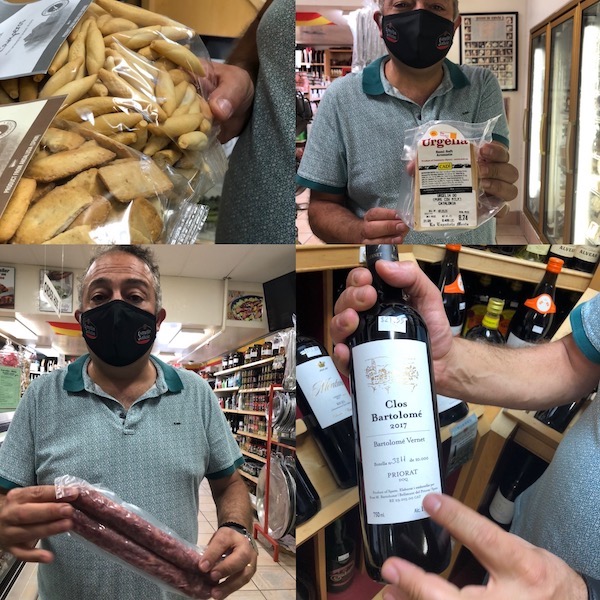
We offered our roasted tomatoes, mayo and pesto, and Spanish olive oil for a salad addition. The recipes are on localfoodeater.com
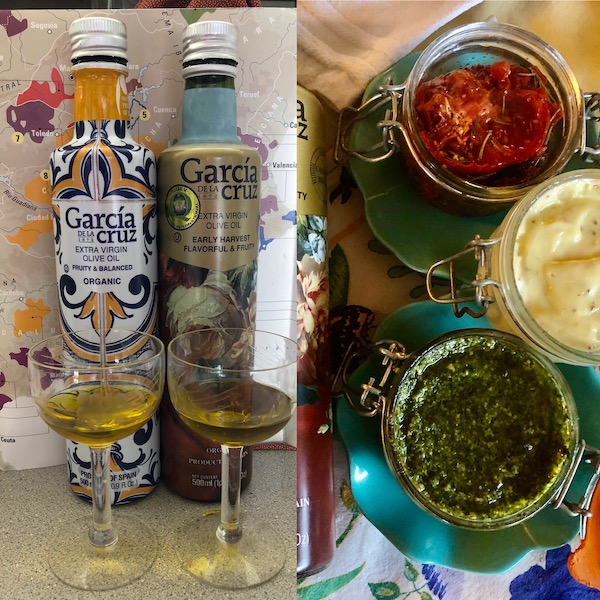
Then, all there was left to do was set the table for six. And, for a fewer number eating, the leftovers are also varied.

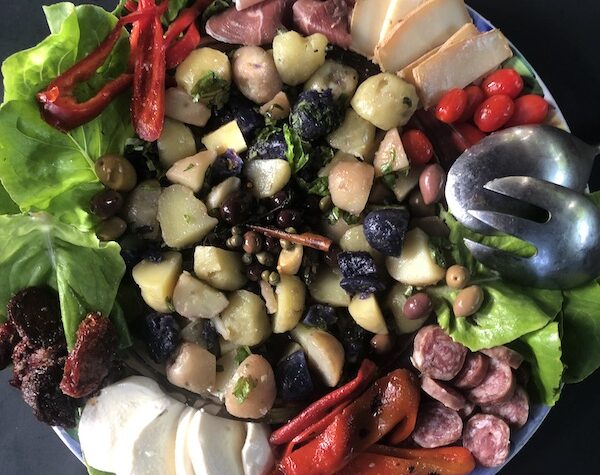

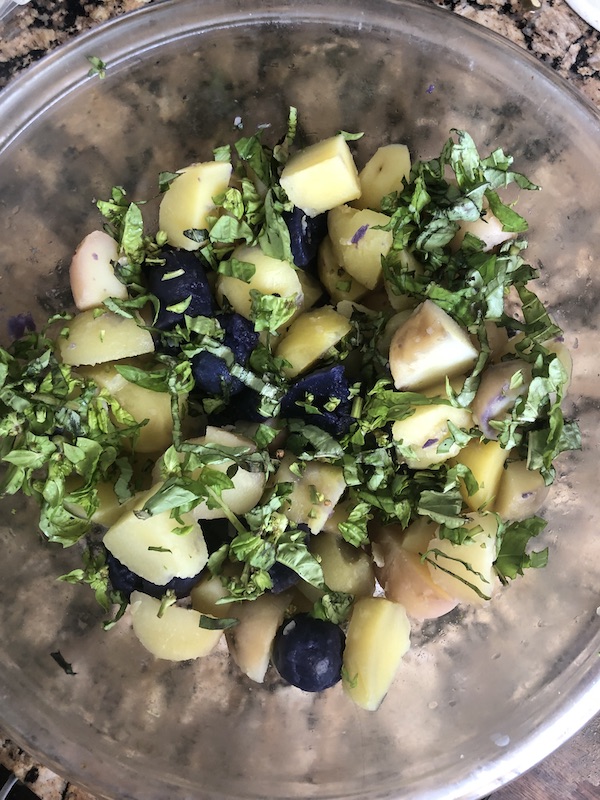
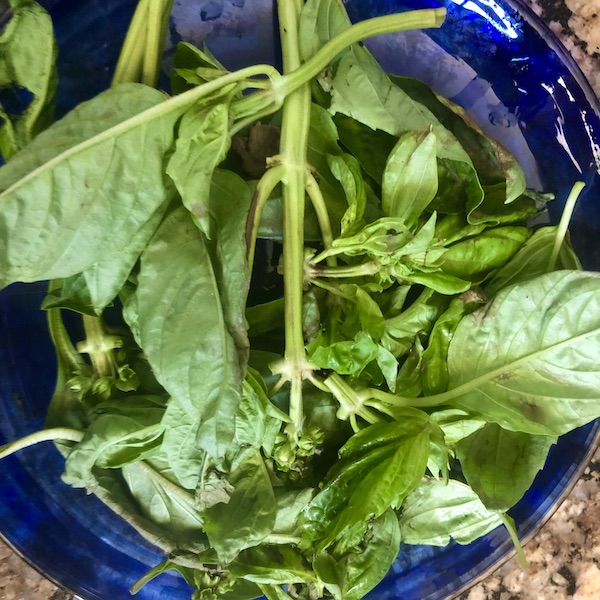
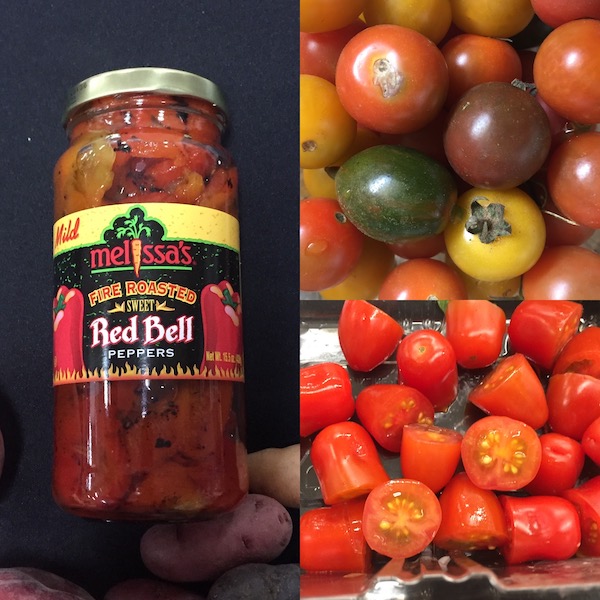



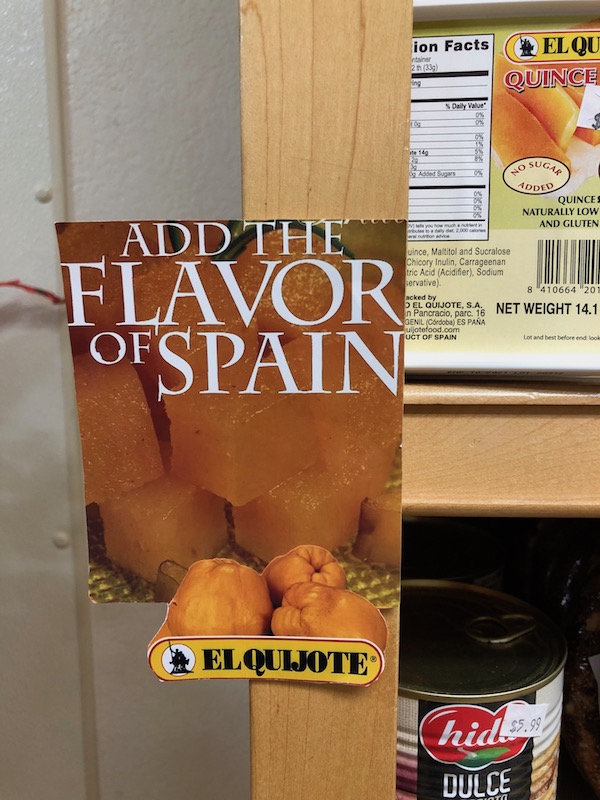
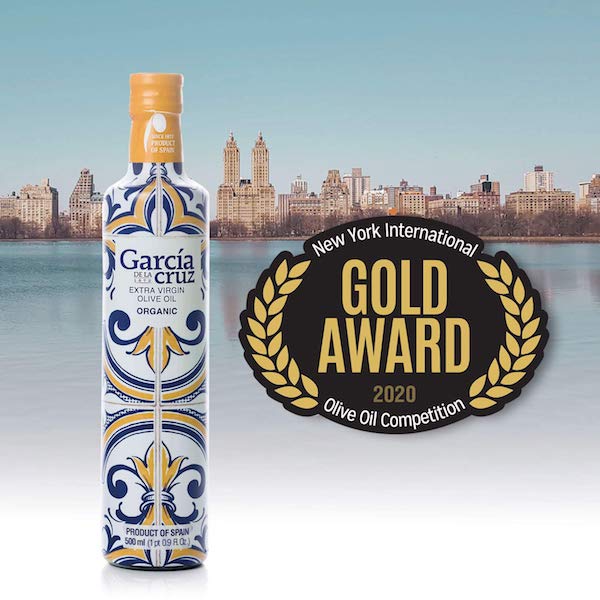

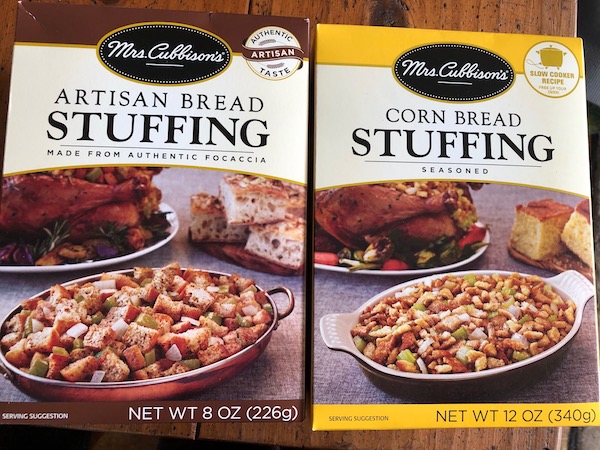
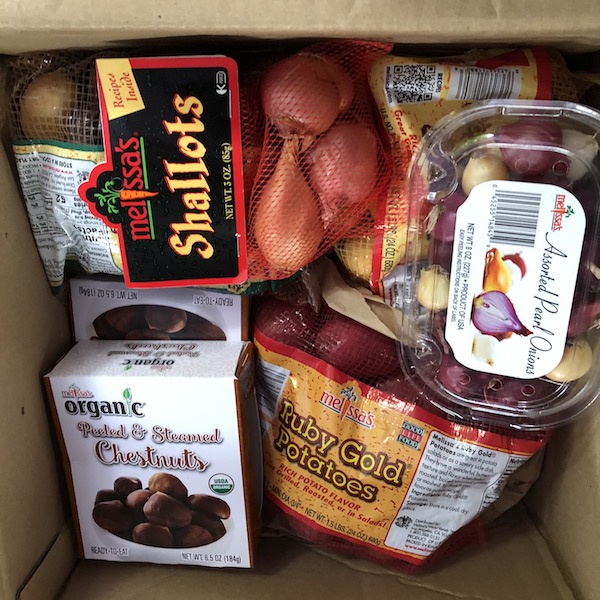



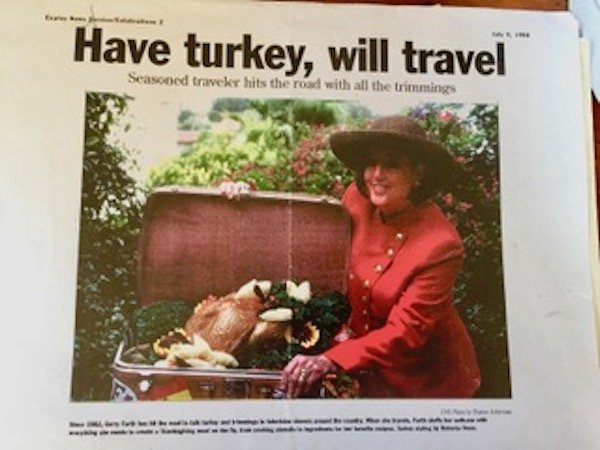
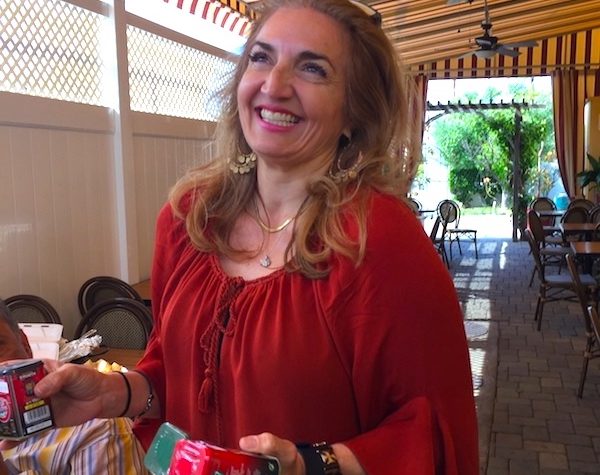
 (Gerry Furth-Sides)We happily wandered around the historic La Española Meats shop and deli in Harbor City waiting for the envoy delegation from Spain who were making a stop between seasonal trade shows to introduce their artisanal products to American buyers. Even in the intimate little space that always has lots of customers from near and far, you can find anything you need for Spanish cooking, from smoked paprika to meats, cheeses, paella pans and Spanish wines.
(Gerry Furth-Sides)We happily wandered around the historic La Española Meats shop and deli in Harbor City waiting for the envoy delegation from Spain who were making a stop between seasonal trade shows to introduce their artisanal products to American buyers. Even in the intimate little space that always has lots of customers from near and far, you can find anything you need for Spanish cooking, from smoked paprika to meats, cheeses, paella pans and Spanish wines. Faraone’s daughter Mari Carmen, our hostess, introduced her husband, amiable Iranian–American (!) Alex Motamedi. Their offerings include Spanish meats, cheeses, wines, olive oils and assorted conservas of vegetables and fish on floor-to-ceiling shelves in the compact little store adjacent to the plant. Artisanal products being introduced into America today include meats, cheese, wines and sweets, and now also include some pork products from pigs raised in Spain.
Faraone’s daughter Mari Carmen, our hostess, introduced her husband, amiable Iranian–American (!) Alex Motamedi. Their offerings include Spanish meats, cheeses, wines, olive oils and assorted conservas of vegetables and fish on floor-to-ceiling shelves in the compact little store adjacent to the plant. Artisanal products being introduced into America today include meats, cheese, wines and sweets, and now also include some pork products from pigs raised in Spain.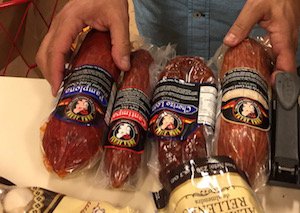



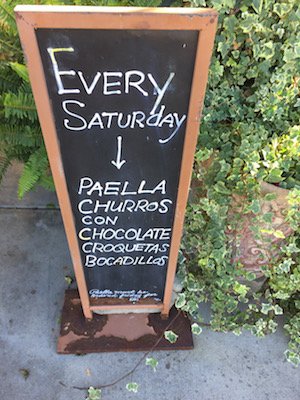



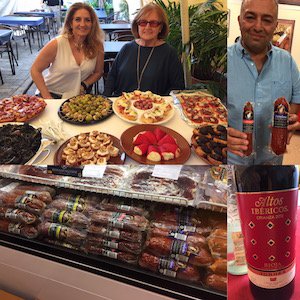
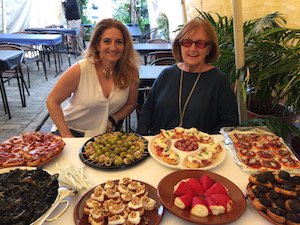
 Faraone’s son-in-law, amiable Iranian (!) Alex Motamedi, operates the business with his wife. He is passionate and detailed about explaining the Spanish meats, cheeses, wines, olive oils and assorted conservas of vegetables and fish on floor-to-ceiling shelves in the compact little store adjacent to the plant.
Faraone’s son-in-law, amiable Iranian (!) Alex Motamedi, operates the business with his wife. He is passionate and detailed about explaining the Spanish meats, cheeses, wines, olive oils and assorted conservas of vegetables and fish on floor-to-ceiling shelves in the compact little store adjacent to the plant.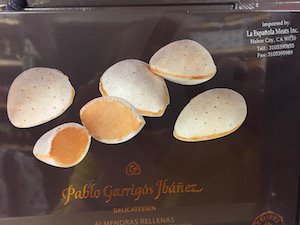

 Gerry Furth-Sides
Gerry Furth-Sides  Barbara Hansen
Barbara Hansen  Chef-owner Alain Cohen
Chef-owner Alain Cohen  Roberta Deen
Roberta Deen  Jose Martinez
Jose Martinez  Nivedita Basu
Nivedita Basu